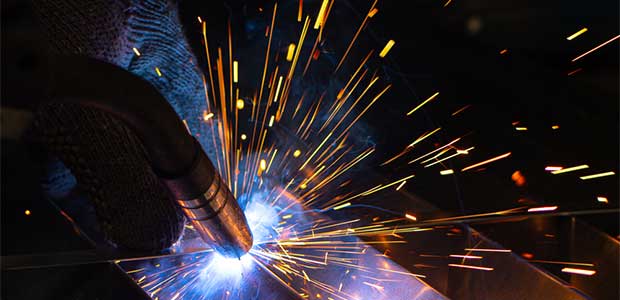
Respiratory Health 101: What You Need to Know about Welding PPE
When welders utilize the correct respirators work can be done safely and efficiently.
Welding, joining together metal parts by heating the surfaces to the point of melting, inherently comes with some occupational hazards. They vary by application; however, sparks, spatter, particulate fumes and arc rays are some of the hazards that may be present. To protect from these hazards, personal protective equipment (PPE) is needed. The common or foundational types of PPE for welding are:
- Safety Glasses
- Welding Helmet
- FR Welding Jacket
- Leather Welding Gloves
For some welding applications, additional PPE, including respiratory protection, may be required if exposure to welding fume constituents exceeds defined limits, such as OHSA’s Permissible Exposure Limits (PELs), which we will expand on later.
Ultimately, welding PPE can be thought of as a system or circuit in which multiple items may be used together to provide adequate protection from the hazards the operator may be exposed to.
Welding Fume & Potential Respiratory Hazard Considerations
Fume is created when metal or other solids vaporize and molecules condense in cool air. Fumes created during mild steel welding include complex metallic oxides of iron and manganese. Welding on galvanized steel may produce a condition known as “metal fume fever,” which presents with flu-like symptoms such as headaches, chest pain, nausea, joint pain, fever and chills.
Weld and filler metal coatings can contain such substances as lead, chromium or zinc. It’s best to remove coatings before welding whenever possible. Welding with stainless steel and hard-facing consumables may require additional ventilation and other protective measures to eliminate or minimize exposures.
Welding in confined spaces can exacerbate any of these potential hazards. When possible, welding should be done in open, well-ventilated areas. Respiratory protection is essential when exposure levels can or do exceed applicable exposure limits.
Understanding Respiratory PPE
As mentioned above, welders must use respiratory protection if exposures to various constituents of welding fume exceed the limits set forth by OSHA PEL or the American Conference of Governmental Industrial Hygienists (ACGIH) Threshold Limit Values (TLV). Following the OHSA PEL is required by law within the US but Lincoln Electric recommends welders comply with whichever threshold is lower.
This article originally appeared in the May 2022 issue of Occupational Health & Safety.